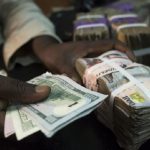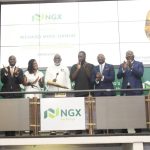Economy
Fitch Upgrades Ghana’s Outlook to Stable
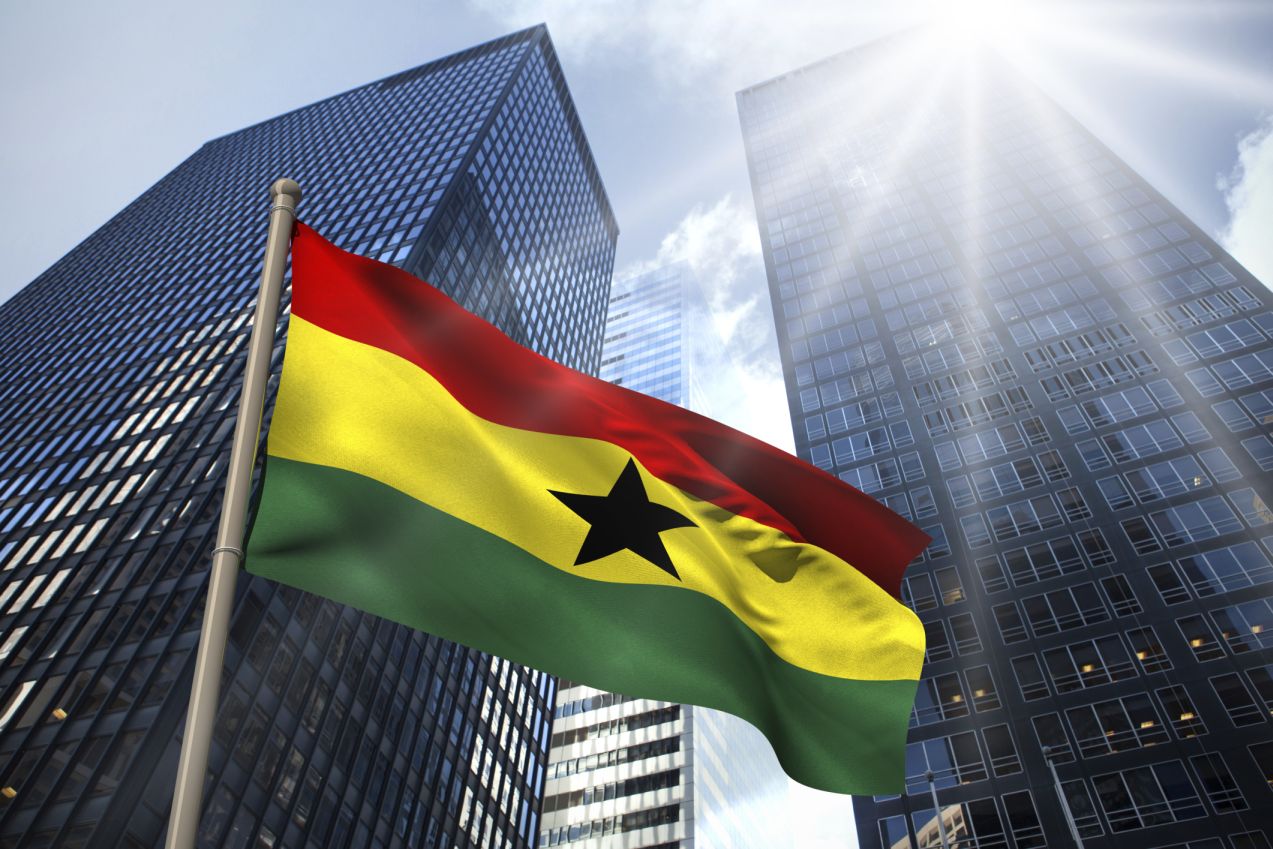

Ghana national flag
By Dipo Olowookere
The Outlook on Ghana’s Long-Term Foreign- and Local-Currency Issuer Default Ratings (IDR) has been upgraded by Fitch Ratings to Stable from Negative. Also, the West African nation’s IDRs have been affirmed at ‘B’.
A statement issued by the rating agency on Friday stated further that it has equally affirmed the issue ratings on Ghana’s senior unsecured foreign and local currency bonds at ‘B’, as well as the ‘BB-‘ rating on Ghana’s $1 billion partially guaranteed note.
Ghana’s Country Ceiling and Short-Term Foreign and Local Currency IDRs have been affirmed at ‘B’, Fitch said.
The agency said Ghana continues to make progress in stabilising its economy after its recent crisis period, with an expected revival in GDP growth, declining inflation, a more stable currency and increasing foreign exchange reserves.
Furthermore Fitch judges that the new government will make progress in reducing the budget deficit after the election-related slippage in 2016, albeit with continued downside risks.
Fitch expects growth to improve to 6 percent in 2017 from an estimated 3.6 percent in 2016, when it was hampered by lower than expected oil production and power cuts.
CPI inflation fell to 12.9 percent year on year in March, from a peak of 19 percent in March 2016. The cedi has recovered to 4.2/$, after depreciating to 4.7/$ in early March. The improvement in the macroeconomic environment has allowed the Bank of Ghana to cut its policy interest rate to 23.5 percent from a peak of 26 percent in 2016.
Further, rising oil production and the benefits from macroeconomic stability will support Ghana’s medium-term growth potential above 6 percent, a key rating strength.
Ghana experienced a blow-out in the 2016 budget deficit, which widened to an estimated 8.9 percent of GDP (on a cash basis) in the run-up to December general elections, compared with a government and IMF target of 5.3 percent, and an outturn of 6.3 percent in 2015.
The cash deficit includes up to USD1.3 billion (3% of GDP) in off-budget and unapproved spending. On a commitment basis, accounting for an additional $650 million in unpaid commitments, Ghana’s deficit widened to as much as 10.5 percent of GDP.
Fitch notes that some of the unapproved expenditure is presently being audited and a significant chunk may be written down, which would lower the deficit.
The election resulted in a win for the New Patriotic Party, Ghana’s centre-right party, which had been in opposition since 2009. In March, the new government announced its 2017 budget, which calls for fiscal consolidation, and measures to strengthen public financial management.
Fitch forecasts the 2017 budget deficit to narrow to 7.5 percent of GDP on a cash basis, and further to 5.5 percent in 2018.
The government’s 2017 deficit forecast of 6.5 percent of GDP is based on an expected increase in tax revenues and a cut to capital expenditures.
Fitch believes that the expected increase in tax revenues will be difficult to realise, as the budget contains significant tax cuts aimed at boosting the business climate. Fitch notes that Ghana has historically underperformed its budgeted revenue projections.
On the expenditure side, interest costs will continue to exert upward pressure. Ghana’s interest costs are 32 percent of its general government revenues, a level well above the ‘B’ median of 9 percent.
Also, a lack of transparency and accountability within the line ministries has persistently led to substantial off-budget spending and the accumulation of arrears.
Successful implementation of the measures outlined in the Public Financial Management Act, 2016 would help control expenditure and keep spending focused on the policy priorities outlined in the budget.
Gross general government debt has stabilised, experiencing a slight increase to 73 percent of GDP at end-2016, from 72 percent at end-2015.
Fitch expects the debt/GDP ratio to decline to around 71 percent by end-2017 due to strengthening of the exchange rate (62% of debt is foreign currency denominated), lower budget deficit and robust nominal GDP growth.
However, Ghana’s debt level will remain higher than peers both as a percentage of GDP (the ‘B’ median is 56% of GDP) and as a percentage of revenue. Ghana’s general government debt/revenue is 366%, compared with the ‘B’ median of 225 percent.
Fitch said Ghana’s $915 million Extended Credit Facility (ECF) with the IMF is a key support for the sovereign ratings.
The incoming government has signalled its commitment to complete the programme, but has engaged with the Fund in renegotiating some of the programme’s indicative targets and structural benchmarks.
IMF staff completed the fourth review of the ECF in March and it will go to the IMF Board for approval before the end of June, allowing for the dispersal of an additional $116 million. Fitch believes that the government remains committed to successfully completing the current programme, which is due to run until 2018.
Ghana’s ‘B’ IDRs reflect the following key rating drivers:
Ghana’s external finances are a rating weakness. Fitch forecasts the current account deficit to narrow slightly to 6.3 percent of GDP in 2017, from 6.7 percent in 2016, but remain above the ‘B’ median of 5.7 percent of GDP.
Increases in oil and gas exports will help Ghana’s export performance, but rising imports will keep the current account deficit from narrowing significantly. International reserves increased by $460 million in 2016, ending at $4.9 billion, about 2.8 months of current external payments.
Fitch says it expects that external debt payments due in 2017 will limit reserves accumulation and forecasts reserves to reach $5.2 billion at end-2017.
The ratings are supported by World Bank governance indictors and business environment indicators that are stronger than the ‘B’ median, underlined by the peaceful transition of power in December. However, the ratings are constrained by low GDP per capita, which at $1,509 is less than half the ‘B’ median, low human development indicators and dependence on commodity exports.
Economy
Three Securities Raise NASD Exchange by 0.84%

By Adedapo Adesanya
Price appreciation recorded by three securities raised the NASD Over-the-Counter (OTC) Securities Exchange by 0.84 per cent on Thursday, May 8.
FrieslandCampina Wamco Nigeria Plc appreciated by N2.20 to close at N41.03 per share compared with the preceding day’s value of N38.83 per share, Central Securities Clearing System (CSCS) Plc exchanged by N2.17 to trade at N23.88 per unit versus N21.71 per unit, and Afriland Properties Plc added N1.07 to settle at N17.45 per share, in contrast to Wednesday’s price of N16.38 per share.
On the flip side, the price of Geo-Fluids Plc went down by 8 Kobo to end at N1.92 per unit compared with the N2.00 per unit it was traded at midweek.
At the close of transactions, the market capitalisation of the trading platform went up by N16.27 billion to N1.944 trillion from N1.927 trillion and the NASD Unlisted Security Index (NSI) rose by 27.80 points to 3,320.16 points from the previous session’s 3,292.36 points.
During the trading session, there was a 58,260.6 per cent surge in the volume of securities transacted in the session to 346.3 million units from the 593,373 units transacted in the previous trading day.
Equally, there was a 4,832.3 per cent rise in the value of securities traded during the trading day to N882.8 million from N17.9 million, but the number of deals dropped 40.7 per cent to 16 deals from 27 deals previously recorded on Wednesday.
Impresit Bakolori Plc finished the day as the most active stock by volume on a year-to-date basis with 533.9 million units worth N520.9 million, followed by Geo-Fluids Plc with 265.8 million units valued at N469.5 million, and Okitipupa Plc with 153.6 million units sold for N4.9 billion.
Okitipupa Plc also remained as the most traded stock by value on a year-to-date basis with 153.6 million valued at N4.9 billion, trailed by FrieslandCampina Wamco Nigeria Plc with 19.5 million units sold for N750.2 million and Impresit Bakolori Plc with 533.9 million units worth N520.9 million.
Economy
Naira Firms to N1,609/$1 at Official Market, Falls to N1,625/$1 at Black Market
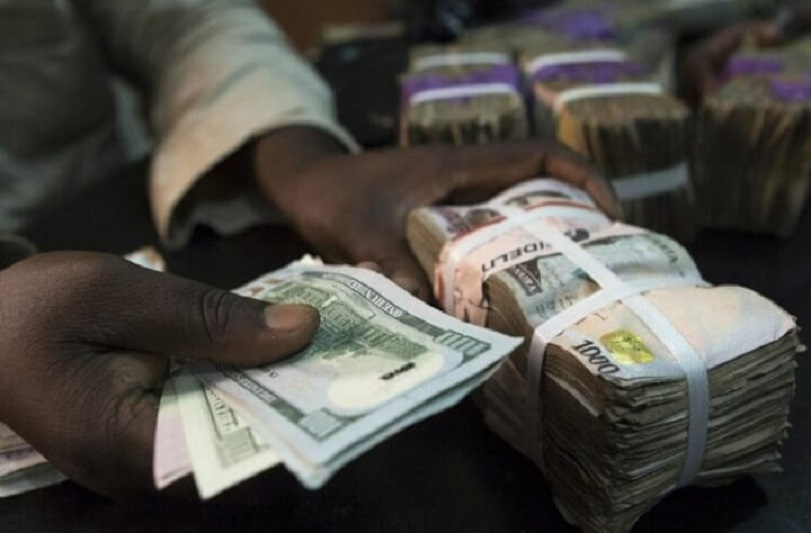
By Adedapo Adesanya
The Naira traded mixed in the foreign exchange (FX) market on Thursday, appreciated against the US Dollar at the Nigerian Autonomous Foreign Exchange Market (NAFEM) and depreciating in the black market.
In the parallel market, the Nigerian currency weakened against the greenback during the trading day by N5 to sell for N1,625/$1, in contrast to the N1,620/$1 it was traded a day earlier.
However, in the official market, the domestic currency improved its value against its American counterpart by 0.1 per cent or 89 Kobo to trade at N1,609.57/$1 compared with the N1,610.46/$1 it was exchanged at midweek.
In the same spot market, the Naira tumbled against the Pound Sterling on Thursday by N7.75 to settle at N2,145.48/£1 versus Wednesday’s closing price of N2,137.73/£1 and gained N3.35 against the Euro to close at N1,818.41/€1 compared with the previous day’s N1,821.41/€1.
Sustained pressure on the country’s external reserves and a widening demand-supply gap in the FX market have weakened the Naira in the past few sessions.
However, there is evidence that debt repayments made from the external reserves have yielded outcome as the International Monetary Fund (IMF) has removed Nigeria from its Total IMF Credit Outstanding list after repaying the $3.4 billion pandemic loan.
Nigeria was among the countries that relied on the IMF for funding support and it has repaid the loan, prompting the lender to remove its name from the debtors’ list.
The journey towards clearing this debt began in earnest in 2023, when the nation’s IMF debt stood at $1.61 billion, reaching $472 million by January 2025.
Meanwhile, the cryptocurrency market soared yesterday in response to US President Donald Trump’s hyping up a trade deal with the United Kingdom, which offered the market some respite as it signaled reducing risk.
Bitcoin (BTC) was up by 4.3 per cent to $103,130.67, Ethereum (ETH) surged by 18.1 per cent to $2,249.11, Cardano (ADA) rose by 9.1 per cent to $0.7675, Dogecoin (DOGE) appreciated by 8.8 per cent to $0.1965, and Solana (SOL) jumped by 8.7 per cent to $163.25.
Further, Ripple (XRP) grew by 5.9 per cent to $2.30, Litecoin (LTC) went up by 4.3 per cent to $95.59, and Binance Coin (BNB) increased by 2.9 per cent to $628.48, while the US Dollar Tether (USDT) and the US Dollar Coin (USDC) closed lat at $1.00 each.
Economy
Crude Oil Prices Soar 3% Ahead of US-China Trade Talks
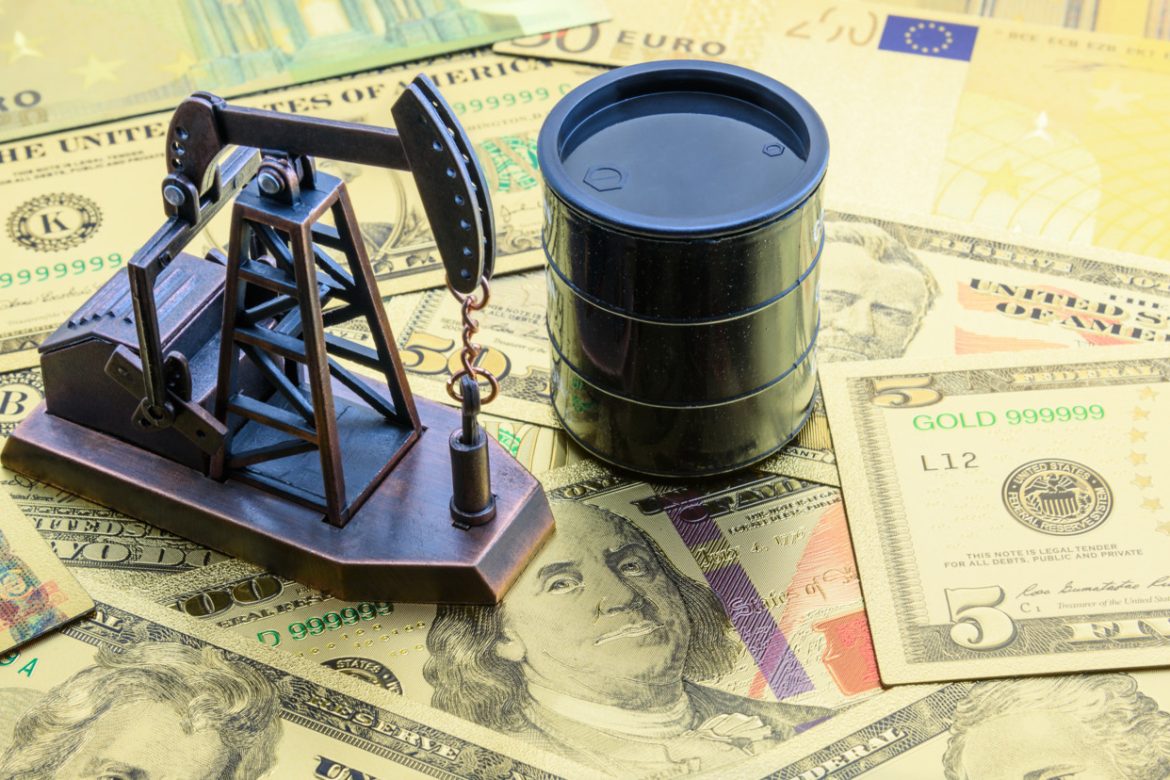
By Adedapo Adesanya
crude oil prices were up by around 3 per cent on Thursday following a breakthrough in looming trade talks between the US and China, the world’s two largest oil consumers.
Brent crude futures gained $1.72 or 2.8 per cent to trade at $62.84 a barrel and the US West Texas Intermediate (WTI) crude futures rose by $1.84 or 3.2 per cent to finish at $59.91 per barrel.
The US Treasury Secretary, Scott Bessent, will meet with China’s top economic official in Switzerland on May 10 for negotiations over a trade war disrupting the global economy.
Optimism around those talks was providing support to the market just as President Donald Trump on Thursday unveiled the broad outline of a trade agreement with the United Kingdom.
The deal is the first by the US with a country whose imports were subject to new tariffs imposed by Trump in early April.
The trade deal leaves in place a 10 per cent tariff on goods imported from the UK while Britain agreed to lower its tariffs to 1.8 per cent from 5.1 per cent and provide greater access to US goods.
He said that the deal includes “billions of dollars of increased market access for American exports,” and that the UK will “reduce or eliminate numerous nontariff barriers that unfairly discriminated against American products.”
On the supply front, the Organisation of the Petroleum Exporting Countries and its allies in OPEC+ will increase its oil output, pressuring prices.
According to Reuters, OPEC oil output edged lower in April despite a scheduled output hike taking effect, led by a cut in Venezuelan supply on renewed US attempts to curb the flows and smaller drops in Iraq and Libya.
Market analysts warned that a US-Iran nuclear deal could drive Brent prices down toward $50 per barrel on increased global supply, but without a deal prices could rise to over $70.
US sanctions on two small Chinese refiners for buying Iranian oil have created difficulties receiving crude and led them to sell product under other names.
This is evidence of the disruption that the US stepped-up pressure is inflicting on Iran’s biggest oil buyer.
Five independent refineries in the Shandong province stopped buying Iranian crude in April for fear of being next on the list of sanctions.
-

 Feature/OPED5 years ago
Feature/OPED5 years agoDavos was Different this year
-
Travel/Tourism9 years ago
Lagos Seals Western Lodge Hotel In Ikorodu
-

 Showbiz2 years ago
Showbiz2 years agoEstranged Lover Releases Videos of Empress Njamah Bathing
-

 Banking7 years ago
Banking7 years agoSort Codes of GTBank Branches in Nigeria
-

 Economy2 years ago
Economy2 years agoSubsidy Removal: CNG at N130 Per Litre Cheaper Than Petrol—IPMAN
-

 Banking2 years ago
Banking2 years agoFirst Bank Announces Planned Downtime
-

 Sports2 years ago
Sports2 years agoHighest Paid Nigerian Footballer – How Much Do Nigerian Footballers Earn
-

 Technology4 years ago
Technology4 years agoHow To Link Your MTN, Airtel, Glo, 9mobile Lines to NIN





